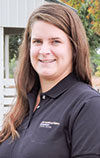Though you might be using someone else to haul your cattle out, it’s still a good time to check your own equipment. Nobody wants to be that truck and trailer on the side of the road with a full load of cattle waiting for a tire company to come repair them.
Truck checklist
- Air pressure of all tires
- Inspect wirings and lights and make sure your connections, turn signals and brake lights are functioning
Trailer checklist
- Tire tread (When using gooseneck trailers, don’t pivot your trailer, and do not allow the wheels on the inside to sit and turn.
This causes the tread to break loose in your tires and eventually can blow a tire.)
- Check that gates and latches are working.
- Ensure wooden floor boards are sturdy with no signs of rotting. The useful life of a wooden floor is 10 years. However, if it is not cleaned regularly, it is even less.
- Check for fractures in aluminum frames and repair as needed.
- Make sure there are no loose nails, siding or handles sticking out that cattle could get cut on. Even brand-new trailers can have gouging hazards.
When loading cattle to take to range, you should sort them by their size, sex and horns or no horns. Try not to load mature cows and calves together if possible. Calves can easily be pushed around by the larger cows and fall in large trailers. Overcrowding can lead to down animals who could get crushed. If you have horned cattle, load them separately and give them more space in each compartment. Load bulls in different compartments to prevent them from establishing social hierarchy in the trailer. If your trailer has internal compartments, use them; even if you are loading a few animals, make sure to close your internal gates to keep them from being jostled during the journey.
When you are finished hauling cattle, clean your trailer to reduce the wear on floor boards and the potential for disease transmission. Manure and urine left for extended periods of time can lead to rusting and can be caustic to metal floors. Clean tires to reduce transfer of disease and weed seeds that may have been picked up from pastures and/or range.
Spring is a busy time of year, but making sure your equipment is in order will prevent wrecks down the road. ![]()

-
Carmen Willmore
- Extension Educator
- University of Idaho Extension – Lincoln County
- Email Carmen Willmore







